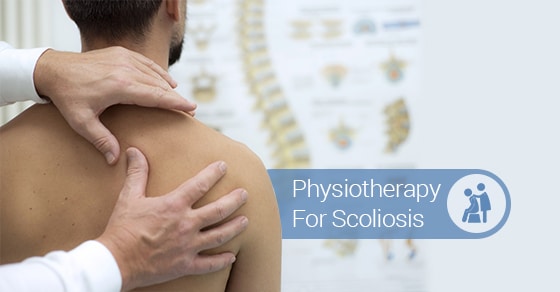Scoliosis is a common musculoskeletal issue that occurs in people of all ages. There are many factors that contribute to the development and management of scoliosis.
In addition, different treatment approaches are used to help correct the issues that can result from scoliosis.
But can physiotherapy treat scoliosis? Understanding scoliosis and its related health issues helps you determine the best options for your needs.
Understanding scoliosis
Scoliosis is characterized by a lateral curvature of the spine. From behind, a normal spine sits in a straight line. A scoliotic spine will have one or more curves to either side, and the degree of curvature will vary depending on the person.
Lateral spinal curvatures that exceed 10 degrees are considered as scoliotic. A spine can have one single curve similar to a “C” shape or multiple curves that result in a spine that resembles an “S.”
The majority of scoliosis results from no known cause, which makes it difficult for patients to get the treatment they need. But structural and functional scoliosis cases do have identifiable causes that can direct treatment plans.
Structural scoliosis is a result of the development of the musculoskeletal system. As a result, the spine may lack the mobility needed to reverse the scoliotic curves.
Functional scoliosis occurs from muscle imbalances, leg length discrepancies, and inflammation of the tissues. As a result, various treatment plans can be used to correct misalignments and prevent future health issues from arising.
Identifying Scoliosis
Scoliosis commonly appears during growth phases. In children, symptoms can be seen between the ages of 10 and 15 years. It can appear in both boys and girls, and girls may have a higher risk of an increase in severity over time.
More importantly, the degree of spinal curvature may increase as a person ages. This commonly occurs in cases where there’s a significant amount of curvature in the spine and will require ongoing monitoring by a doctor.
Scoliosis can result from degenerative disc issues. As the intervertebral discs lose their integrity, the position of the spine becomes altered.
Common treatment options
Patients have a number of treatment options available depending on their needs, including physiotherapy. Your physiotherapist will help you determine the right treatment plan to give you lasting results and prevent secondary issues related to scoliosis.
Bracing treatments involve the use of a brace to reduce increases in the spinal curvatures. If the spine hasn’t fully developed, bracing can be an effective way to prevent unwanted changes.
Teenagers and young adults are typically the ideal candidates for the use of bracing. It’s also effective in cases that have minimal degrees of curvature but have undergone an increase of more than 5 degrees in a 6-month period.
Braces must be worn throughout the day to provide the desired results, and they must be correctly fitted to each individual.
Surgery is used in scoliosis cases that involve spinal curves greater than 50 degrees. It’s only recommended in cases where the patient’s quality of life is significantly affected.
The use of surgery depends on factors that include the severity of misalignment, pain symptoms, development stage, and the region of the spine that’s affected.
Using physiotherapy to treat scoliosis
Scoliosis can be improved through the use of physiotherapy treatments that target muscle imbalances and other factors contributing to excessive spinal curvatures.
Focus Physiotherapy develops a treatment plan that helps you achieve greater flexibility in muscles that are chronically short and tight while strengthening those that are long and weak.
These muscle imbalances cause the spine to flex laterally and affect an individual’s mobility, posture, and function. Addressing imbalances significantly reduces and eliminates pain symptoms.
Physiotherapy can treat scoliosis in patients who use braces as well as those who don’t. It supports the results achieved through backing by ensuring that a normalized spinal position is maintained as an individual eliminates the use of a brace.
Physiotherapists consider a number of factors when developing treatment plans. These include the degree and location of spinal curvatures as well as the patient’s age, gender, and bone development.
Symptoms related to scoliosis such as back pain or respiratory issues are also considered in order to provide the proper treatment to address scoliosis in children and adults.
Finding the right physiotherapist to help with scoliosis
The right scoliosis treatment plan comes from finding the right physiotherapist. Focus Physiotherapy has extensive experience in treating scoliosis and its related issues.
Patients should consider the treatment methods used when obtaining physiotherapy treatments for scoliosis.
Modalities such as joint mobilizations, manual therapy, resistance exercises, and others give you a comprehensive treatment plan that provides relief from scoliosis.
Your physiotherapist will take the time to consider your health history and unique needs. This gives you a customized treatment plan that leads to measurable results in treating scoliosis.
Physiotherapy is an effective treatment solution for scoliosis, and working with an experienced physiotherapist gives you the resources you need to achieve lasting relief.
Contact Focus Physiotherapy for more information on the treatment options that are available. Understanding scoliosis and obtaining effective physiotherapy treatments prevents health issues and improves your long-term wellbeing.

